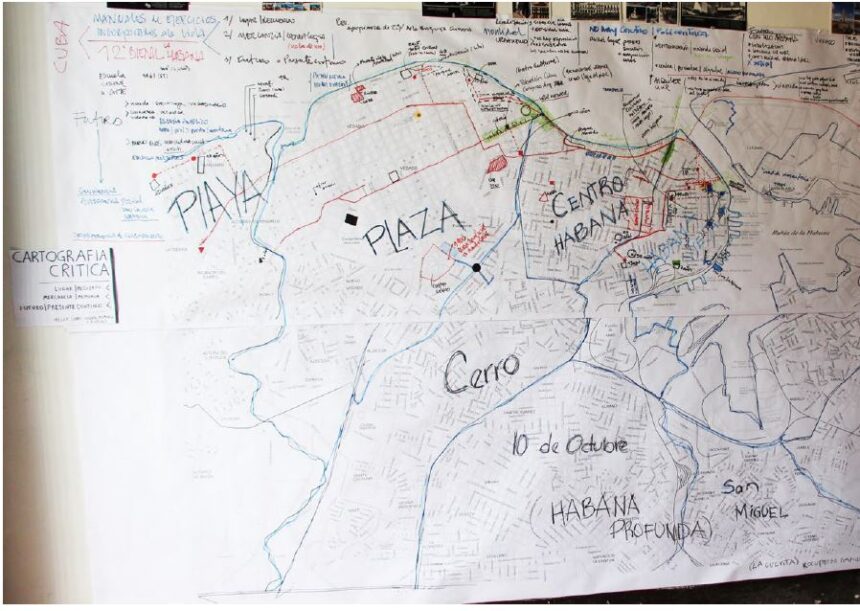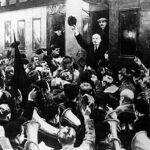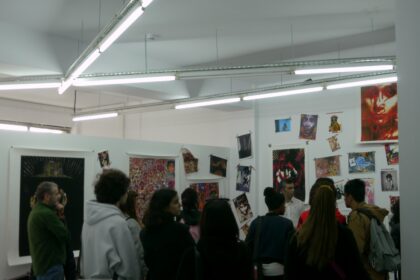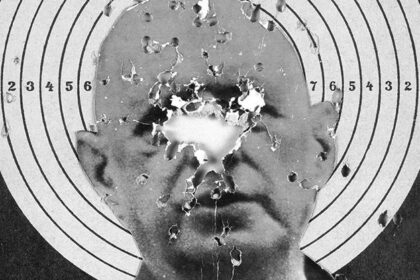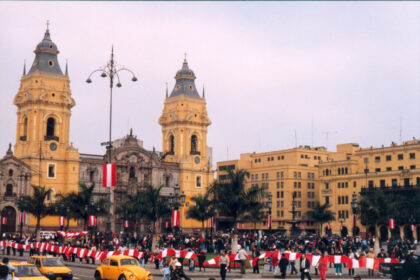An Interview with Jorge Fernández Torres
Paloma Checa-Gismero
Curator Jorge Fernández Torres was director of the 11th and 12th iterations of the Bienal de La Habana, in 2012 and 2015. He is now Director of the National Museum of Fine Arts in Cuba. The 12th Bienal de La Habana aimed to direct local and international audiences’ attention to Havana’s social fabric, and featured a majority of site-specific and socially engaged artworks. Celebrated from May 21 to June 21 2015, this exhibition spanned over five districts in the Cuban capital, and often involved Havana residents in executing the projects. In this interview, Jorge Fernández Torres and Paloma Checa-Gismero discuss the manifold challenges that arise from curating pieces that entail collaborating with communities, their resolution in the context of Havana, and the Bienal’s position in the broader biennial global circuit.
![[Image 1. CRAC, Manual de ejercicios para la vida. Manual for life actions. Fundación alejjo Carpentier]](https://field-journal.com/wp-content/uploads/2017/02/Fernandez-Torres-Image-1.jpg)
Jorge Fernández Torres – Our first condition to artists was to work with the Cuban context, and when one does not live in the context they are supposed to work in, there is the danger of falling into demagogy and superficiality. Another important factor was that I knew an artist could never produce a work without help. It was important to find interlocutors so that artists could feel comfortable working. An interlocutor is like being a facilitator, like helping mediate an encounter, assisting the artist in not just looking for the site-specific, but also for the specific person and for specific publics. The 11th Bienal was a point of inspiration for how to develop this last one. In that sense, it became crucial for me to act more like a mediator than as a collaborator. To facilitate, making sure that everyone feels comfortable. Of course it was not always me that was the interlocutor, sometimes it was a fourth person. Maybe the artist already had some acquaintances in Cuba and could work on their project with their aid. I think that was the most challenging part of this last Bienal, for artists to understand the importance of relying on interlocutors. You can’t land in a reality like Cuba’s and come up with a piece… for that you would need to live here two, three, four years… it’s unthinkable, for budget and logistical reasons. And this work model ended up being successful. I think all participating artists achieved good chemistry with those they worked with.
PCG – How did you find those facilitators, those intermediaries? Was it you or your team?
JFT – The Bienal is not just one person; it is a team of curators. Everyone from the team contributed. The team is very diverse, integrated by historical curators, some of them founders of the first iterations of the Bienal de La Habana; others are younger, like you, or even younger. These last five young curators were on the ground, helping find the right interlocutors. They also contributed with ideas, proposals, names… often, they themselves even acted as such.
![[Image 2. La Curtiduría. Proyecto de gráfica móvil. Mobile graphics project. Different locations in Havana]](https://field-journal.com/wp-content/uploads/2017/02/Fernandez-Torres-Image-2.jpg)
PCG – Were there any other challenges, maybe of political or structural nature, that came up with curating site-specific artworks in this iteration?
JFT – Working with public institutions is always complex. It entails authorizations, letters, talking with a large amount of people… and all this can be taxing. I think we were all incredibly patient, and only two projects could not be carried through. One was Eduardo Ponjuán’s, who ended up having to modify his participation in the Bienal. He had initially proposed having one minute of silence in Radio Reloj, a radio station that gives non-stop news, and has only stopped when, on March 13, 1957, Juan Antonio Echevarría, a member of the Revolutionary Directory, assaulted it to announce the assassination of dictator Fulgencio Batista. Artist Eduardo Ponjuán wanted to interrupt the broadcasting from the Wifredo Lam Contemporart Art Center, and say, “This is a Bienal de La Habana project!” They did not authorize it. I myself spoke personally with the radio station director, but she claimed the station’s motto is that they never stop the news. There was no way. The other project that didn’t happen was Guillermo Ramírez’s, an intervention in the zona rosa in Vedado, a gay district. Guillermo wanted to paint the pedestrian crossing across the street from the Yara movie theater with the colors of the gay flag. But the city did not authorize that either. They authorized us to do it at Trillo Park, but it made no sense there! It would have been beautiful to do it in the zona rosa, the gay district. They said it was against transit regulations.
PCG – Havana is a big city, with over two million residents, fifteen districts… how did you decide on your audience? Who were you thinking of when planning the 2015 iteration?
JFT – We came from an 11th Bienal, in which we focused on the concept of the public sphere. Here, instead, we chose to work with micro-publics, micro-utopias, micro-communities. I think, for instance, in the piece we produced with Los Carpinteros in 2012, I asked them to think of a specific audience and a specific space… how to shake the Prado. And they came up with this backwards conga. It was a huge success. I remember we were walking along the Prado one day and I told them: “I want you to participate in the Bienal.” I think that was the first time they worked with video and performance. Until then they had been more concerned with the visual. This piece had to not be a sculpture or an installation, for it had to be thought of for the specific public around Prado, for that specific place. It had to get everyone dancing. And that’s how it was. It is from experiences like this one that we can scrutinize and analyze other areas, away from Prado, the Malecón, that we can start exploring farther away, working with micro-communities, with people who had never in their life thought about what art is. For me, it was very important to work with a virgin public.
PCG – In your opinion, what artworks got closer to blurring the boundaries between a virgin and a not-virgin public?
JFT – I am using the term “virgin” in a purely caustic and schematic way but, for example, consider Nicolás París’s work. From the moment you say, “We’re working with kids” or “We’re incorporating kids in the project.” In the 11th Bienal, the Kabakovs worked on the concept of tolerance. Children draw their own images of what tolerance is. It was a beautiful project, very nice. But I am interested in getting where Nicolás París got. The Kavakovs’ work materialized as a boat sail. It was exhibited, showing all that happened to the materials. But it was just that, and I am not saying the boat, sails, and kids’ drawings did not look nice, but they don’t substitute what happened in the workshop when they were talking with the kids, when they were all discussing the project. And I believe Nicolás París went a bit further in 2015, in the sense that he said, “Let’s go work in a school, let’s go work with the education programs these kids are following, with their teachers… I want to do something with them.” For them. No collector will intervene, no spectators. There was a very special relationship between Nicolás and that specific public. There was a kind of complicity that no one should interrupt, as that would destroy it.
PCG – How was that piece documented?
JFT – He wasn’t interested in any documentation. It was the experience he’d lived there… all of that… he said, could not be represented. Why should I place a caption, a drawing… it makes no sense. All that is so strong, so interesting, cannot be represented. And documentation is, after all, representation. Documenting is half of the experience, as Goethe said. It is not the experience itself.

PCG – How does the recent focus on site-specific and socially engaged art fit in the Bienal’s historically altermodern program?
JFT – I believe that the Bienal should always be willing to take risks. This has been the case since its early days, when we programmed workshops with Martha Palau and Julio Leparc. This last one took place in the public space, and involved children and adults interacting with pieces. The Bienal made room for these workshops to be possible in Cuba. And I believe that after all these years it was important to work with this idea of communities that I was just explaining. If there is anything that Cuba can show the world, it is its context. Old Havana is beautiful, our architecture is beautiful, the Malecón is beautiful. But look, we are not going to compete with the Pyramids in Egypt nor the Alhambra in Granada, nor with Bruges. What is richest in Cuba is its people, its context—the complexities of such an odd and atypical country. A country with first-world health standards, a fantastic education, but that also suffers from very hard survivalist economic conditions. It is a country of many contrasts, and one can’t come with the Mexican or the American or the Spanish model in mind. Cuba dearticulates all models. It is as if a virus infected your computer and you didn’t know how to respond.
PCG – Do you think that the Bienal, with its structure, its organization, and its solidity, can help preserve Cuba’s different reality?
JFT – The Bienal should not lose contact with the social. The social must be stimulated from the Bienal. I think the country and its cultural institutions have much yet to do so as to counter art’s narcissism. A part of art looks itself in the mirror and says “Oh, boy, I’m good-looking.” But I believe art should take on risks—art should be committed. This is important. Because when you are by yourself wondering how will this collector or museum director look at you… art is extremely egocentric. I tell this to my students at ISA (Instituto Superior de Arte). Zen philosophy says that one grows as a human and as an artist when one leaves ego’s residue behind. This is very hard for the art culture to learn. This idea of individual transcendence is hard to get rid of, since we are still too rooted in Western thought. We think we are nothing without transcendence. But when an artist succeeds in entering a social fabric… that is a complicated and complex process. The Bienal should continue working with these alternative and peripheral discourses, and help break that desire for transcendence. The Bienal is in a position to do it.
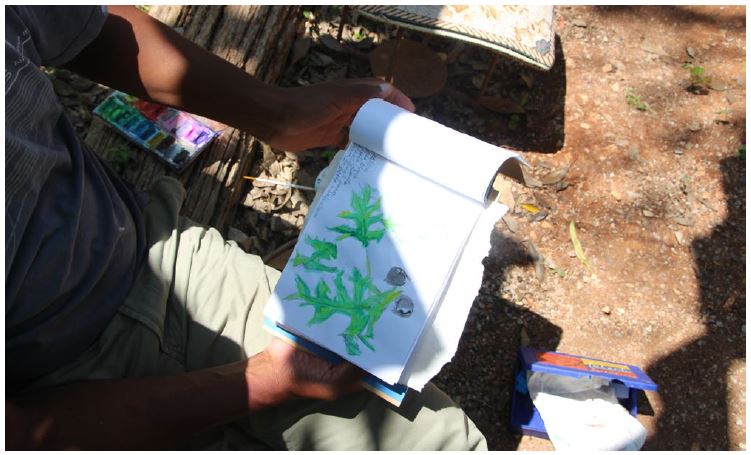
PCG – If you believe that the Bienal could push towards this dissolution of individual authorship in the social fabric, could the Bienal also be a model for distributing value in a more democratic way?
JFT – Of course! In this sense, you had the exhibition Montañas con una esquina rota (Mountains with a broken corner), part of the Bienal, with such controversial artists like Ryan Gardner and Pierre Huyghe. I thought they were both interesting counterpoints to some of documenta’s more narrative works where, on one hand, you had a steel Penone structure and, on the other, a Saharaui women’s camp. What did the Saharaui women have to do with Penone’s art? It was all about the most pure possible formalization and desacralization. They were saying: all of this is art. Well, that’s easy to do. But when you seek coherence and follow a line… in this sense I think the Bienal de La Habana went further than documenta. And Ryan Gardner was here, in this big empty factory, making a guard wander around the space, coming and going. And you could say, well, is Ryan Gardner in the Bienal? Which is Ryan Gardner’s piece? You couldn’t see it. It was the wandering guard. Another of these works was Tino Sehgal’s in the Wifredo Lam Center. Members of the audience that engaged in a conversation about economy would get one Cuban peso in exchange.
PCG – Following up on those pieces you described from Montañas con una esquina rota… there were also cases in the Casablanca district in which neighbors functioned inside the projects, as gallery sitters, as participants…
JFT – Yes, there you had a schoolteacher working inside a project, in the same house that Casablanca’s original newspaper was being redistributed. Many students from ISA began working in Casablanca many months before the opening—they even organized a Silvio Rodríguez concert in the district’s amphitheater.
PCG – In these cases, where artists paid participants a salary, part of the monetary value generated in these pieces stay in the community. Was this something planned beforehand?
JFT – Of course! The field up the hill from Casablanca… I was just there the other day again, and saw that neighbors had created a small survival company. They are helping with community development; it’s a fantastic project. They told me about the difference it made for them to host part of the Bienal in their district. Talking with artists and visitors made them realize their creative potential. After the Bienal, they started a small company with neighbors. This is very interesting, and not because a Bienal artist stayed onsite, but because the neighbors realized they could work in this direction… Next to the field up the hill worked Guatemalan artist Sandra Monterroso. She worked with coconut sellers, and they made this big necklace mixing blue feathers from Guatemalan faisans with autochthonous elements from Cuba. It was a mixture of Afro-Guatemaltecan and pre-Hispanic cultures, all in dialogue with what is happening in Cuba today. At the end of the Bienal the necklace was thrown into the ocean.
![[Image 5. Juvenal Ravelo. Mural comunitario. Community mural. Casablanca]](https://field-journal.com/wp-content/uploads/2017/02/Fernandez-Torres-Image-5.jpg)
PCG – How much of the original ethos of “curators as researchers” do you think is still preserved in the Bienal?
JFT – There is too much superficiality in curatorial work; evidently, there is a lot of money circulating, a large amount of people in biennials with many different interests, in general. Not in Cuba. In Cuba we still make the same salary than we did at the beginning. I believe the Bienal de La Habana is still an investigation, not in the classic sense of an academic investigation, but in relation to the discussions we hold on how to engage with different creative processes happening in the countries of interest to the Wifredo Lam Center. Our researchers take it seriously. They are permanently looking for ways to bring to Havana those artists who are changing models of practice and structure those who are moving in a more peripheral way.
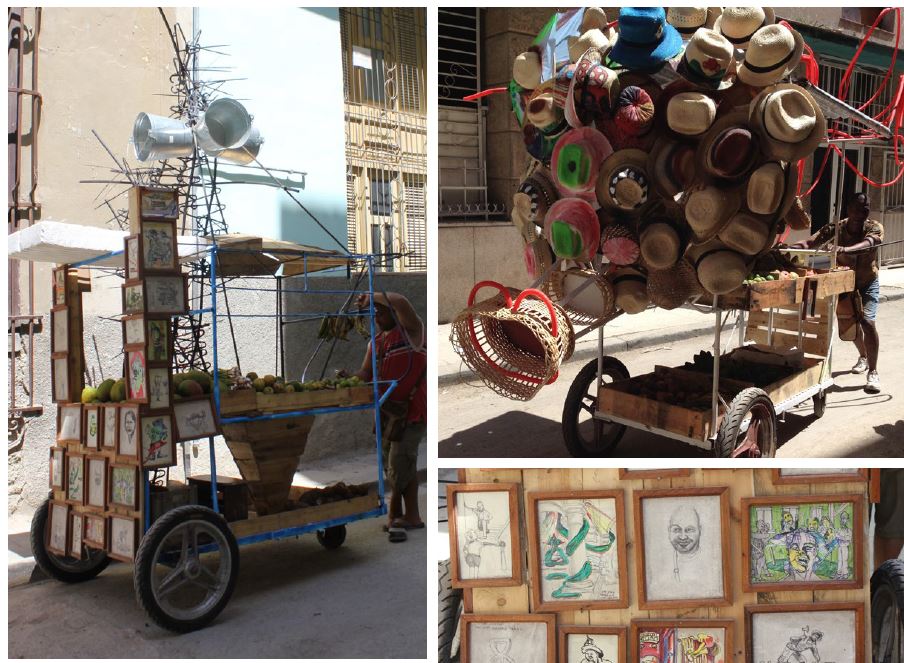
PCG – Lastly, how do you see the last iterations of the Bienal de La Habana in relation to other international biennials like, for example, Manifesta or Istambul?
JFT – Honestly, and this is not because I was directing this last iteration, but it didn’t resemble any other biennial. I have had the chance to visit some biennials, and my colleagues have too. I think this one was a different biennial because it marked a very radical positioning. Some people tell me: “No, but they sabotaged it… there was this parallel project with Cuban and international artists who were totally unrelated to Cuba, in the historical complex Morro-Cabaña.” But I obviously knew [curating the Bienal] would be very difficult… you see Kassel, it a small city compared to Havana. Venice is also a small area compared to Havana. Havana is a big scale city. It was impossible to hope that my project would be the only one in town. There were plenty of collateral projects. But in the end, what I did with my curators was an extremely radical project. Something no other curator in any other biennial would have dared do at this scale.
PCG – Why?
JFT – There are too many galleries and people with their own interests behind them. I didn’t curate the Bienal hoping to be appointed documenta director after, nor Venice’s or MoMA’s. I did this biennial knowing that maybe my scale is limited to Cuba, and if I were invited to work abroad it would be to speak at universities, and the like.
*

